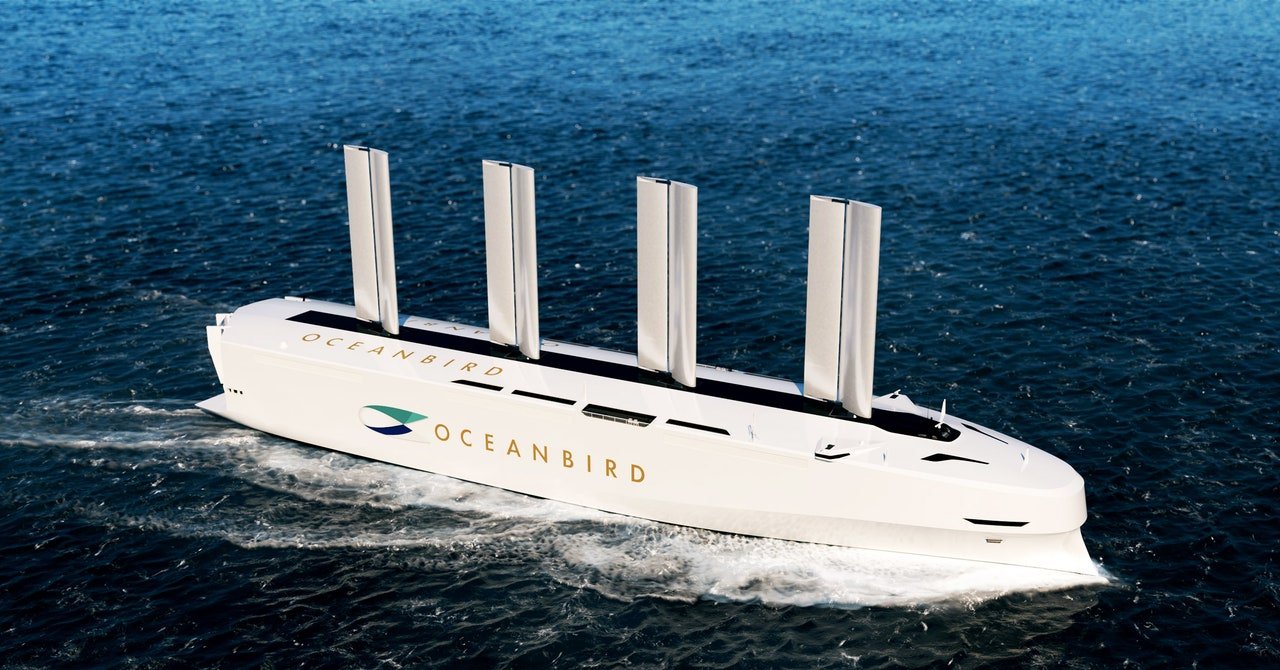There are limitations, such as choke points like the Suez and Panama canals: “Neither of them allows vessels to operate under sail. The Panama Canal also has a bridge over it, with a height limitation of around 50 meters,” De Beukelaer says. And of course, not all ships adapt well to sails. Container ships, for example, have little space on deck to mount them, in contrast to car carriers or bulk carriers, which tuck away their load in the cargo hold—leaving plenty of available surface—and don’t require cranes for unloading.
According to the IMO, there are seven categories of wind propulsion technologies, which can apply to virtually every type of ship. While Oceanbird uses hard sails, there are also soft sails, resembling those most associated with classic sailboats, but with more advanced materials.
For large ships, rotor sails (also called Flettner rotors, after their inventor) will be a popular option. These are composite cylinders that rotate up to 300 times per second, generating thrust due to a pressure differential. The similar looking suction wings or turbosails, developed by explorer Jacques Cousteau in the 1980s, do not rotate, relying instead on internal fans that create a suction effect. There are also giant kites, usually deployed about 200 meters above the ship, and wind turbines, not too different from those used to generate electricity but mounted on deck with the option of providing power or thrust. Finally there’s a hull form, in which the entire ship is essentially designed as a large sail to capture the wind.
About 25 large, wind-powered cargo ships are already operating worldwide, with most of these technologies represented: “The rotor sails have the most installations, one of the reasons being that they started to commercialize earlier than the other ones,” says Gavin Allwright, secretary general of the International Windship Association, a nonprofit organization founded in 2014 that promotes wind propulsion in commercial shipping. “Back then, the whole policy framework of shipping revolved around fossil fuels. To get wind accepted and included into that is an ongoing challenge, but we’re increasingly seeing that happen: By the end of this year, we should have 48, possibly 49 wind-powered vessels, bringing us up to possibly 3.5 million deadweight tonnes of shipping.”
That’s a minuscule percentage of the world’s global capacity of 2.2 billion deadweight metric tons, as wind technology is still expensive in this nascent phase. “We’re still in pretty early days, but for every doubling of installations, we see a 10 percent reduction in costs,” says Allwright. “However, 2023 will likely get more like a 20 or 25 percent [savings], because those early reductions in costs are the easy, low-hanging fruit.”
Among other factors that could accelerate uptake, Allwright says, are streamlining the certification process for new wind-powered ships, as well possibly higher costs of fuel, which could be impacted by new carbon taxes like the one the European Union has agreed to introduce in 2024. Another key enabler would be the acceptance of slower shipping times. According to IMO estimates, simply adding wind propulsion to a single ship could lower emissions by more than 22 percent. However, extending trip duration by a fifth increases that to nearly 50 percent, and extending it by a half reduces emissions by 67 percent. A study by the University of Manchester similarly shows that cuts in emissions jump from 10 percent to 44 percent on a ship with rotor sails when speed is reduced and a flexible arrival time is allowed.

Leave a Reply
You must be logged in to post a comment.